
At what age can my child use a booster seat?

If you're asking yourself this question, it's because your child is no longer a baby. He's getting older and it may be time to change his car seat.
Here's what you need to know about the booster seat
Most booster seats can be used as soon as your child reaches 1 metre (around 3 years of age).
As the safest position is the back-to-front position, we advise you not to rush into changing car seats and to leave your child in a back-to-front car seat for as long as possible, especially as
your child starts to become more robust from the age of 4.
With a booster seat, the 5-point harness that holds your child perfectly securely in the seat is a thing of the past. Make way for your vehicle's 3-point safety belt. It will protect your child properly as long as it is fitted perfectly.
A few installation tips :
1 - Positioning the belt
The shoulder belt should be positioned over the shoulder, not under the arm or behind the back.
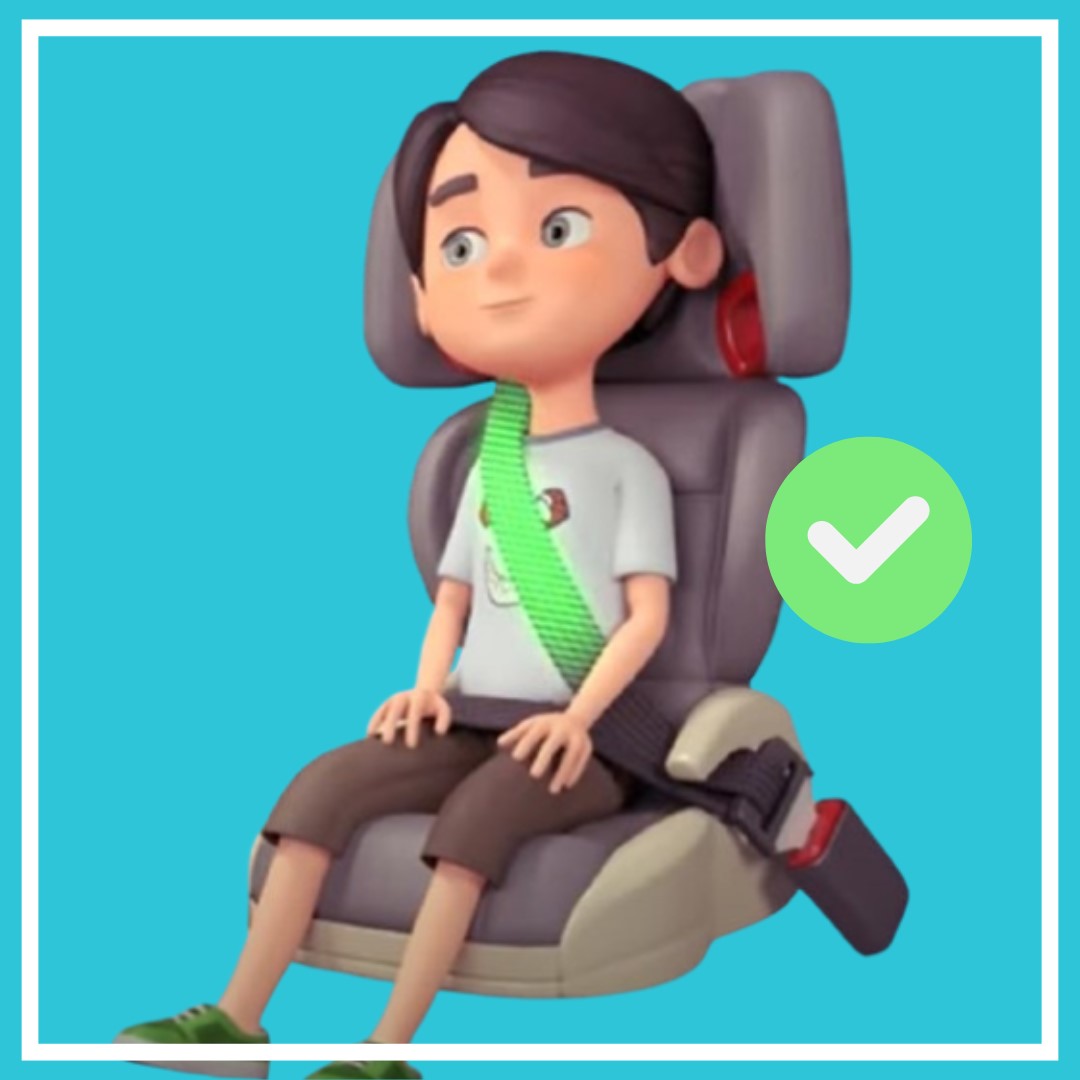
Well positioned on the shoulder
In the event of a collision, your child's body is held firmly in place in the booster seat.

Poorly positioned on the shoulder
In the event of a collision, the body is thrown forward, with a probable risk of head and neck injuries.
The lap belt must be positioned correctly over the hips and be tight.
A loose belt tends to sit on the abdomen, which is very dangerous in the event of a collision.
The same problem can occur if your child wears clothes that are too thick (coats, etc.), which must be opened or removed.
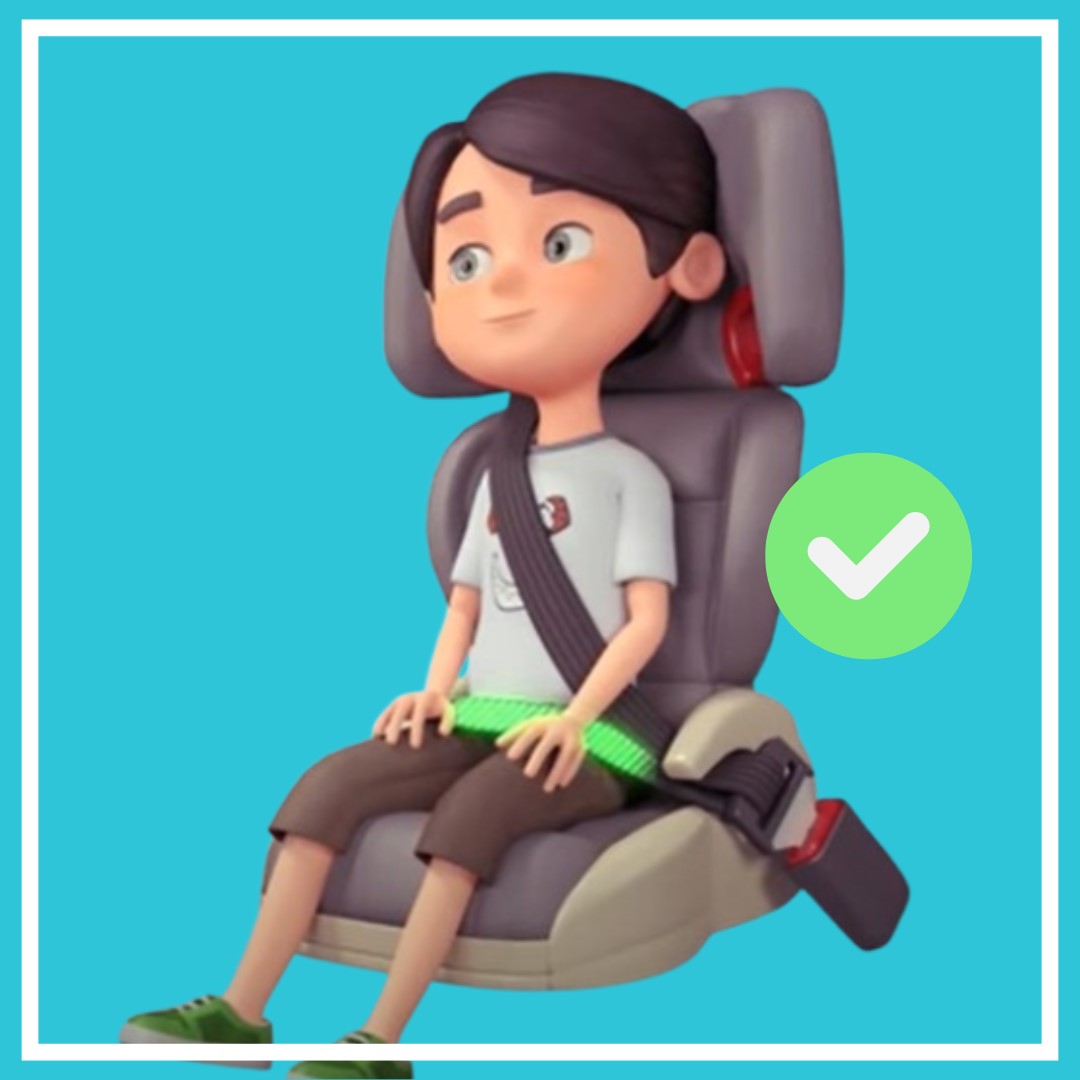
Well positioned on the hips
In the event of a collision, the seatbelt rests level on the bony part of the hips, so your child is held securely in the booster seat.
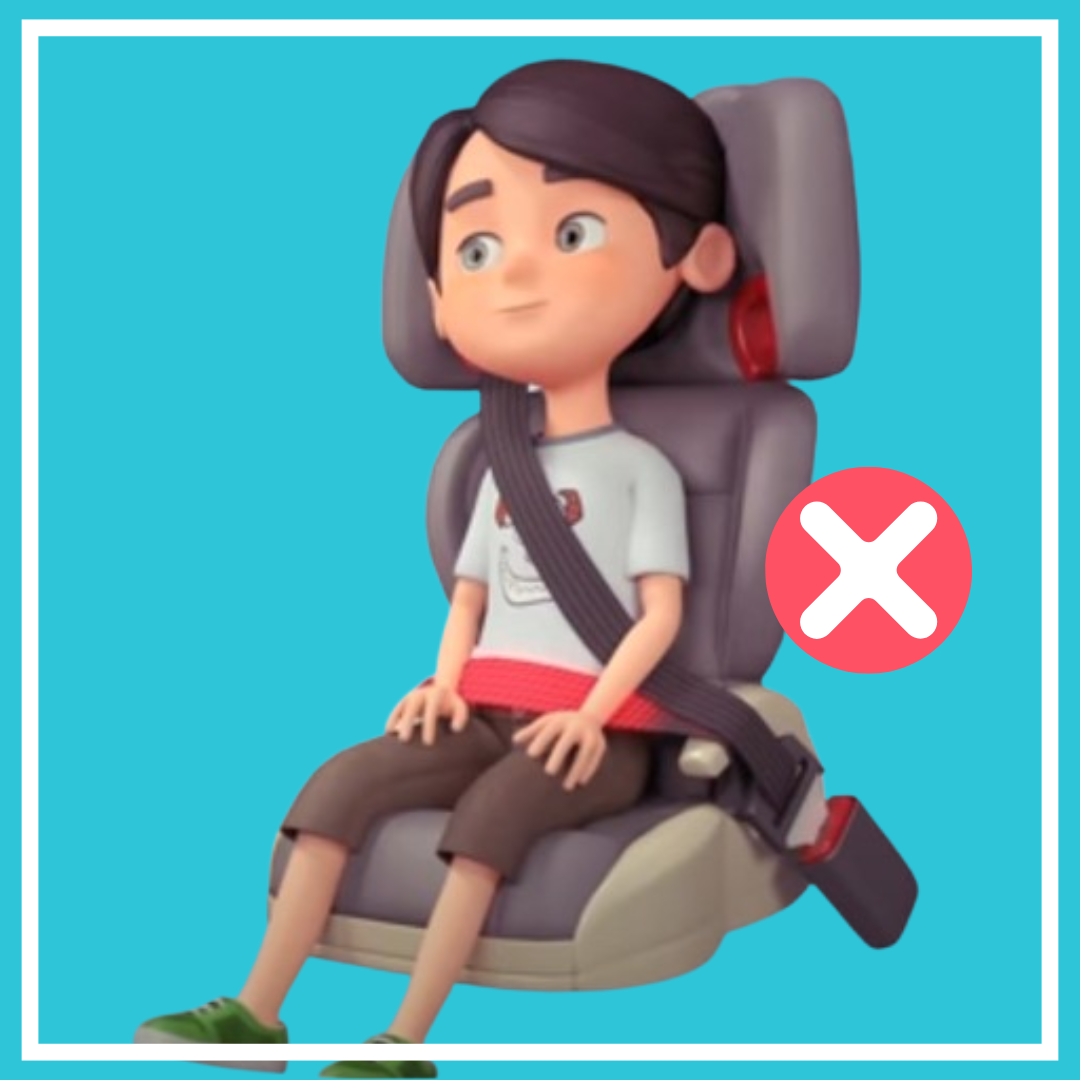
Poorly positioned on the hips
In the event of a collision, a seatbelt positioned over the abdomen risks damaging internal organs
2 - Belt guides
All booster seats are fitted with ‘belt guides’ to prevent incorrect installation of the seat belt.
To make them easier to spot, they are usually green.
There are guides at the bottom of each side of the seat for the lap belt. This prevents the seatbelt from riding up over your child's abdomen.
There are also guides at the top of each side of the headrest for the diagonal belt. This is a safer way of holding the seatbelt correctly on your child's shoulder.
So it's very important to pass the seat belt through the 3 guides on the booster seat for your child's safety.
.jpg)
Waist belt guide
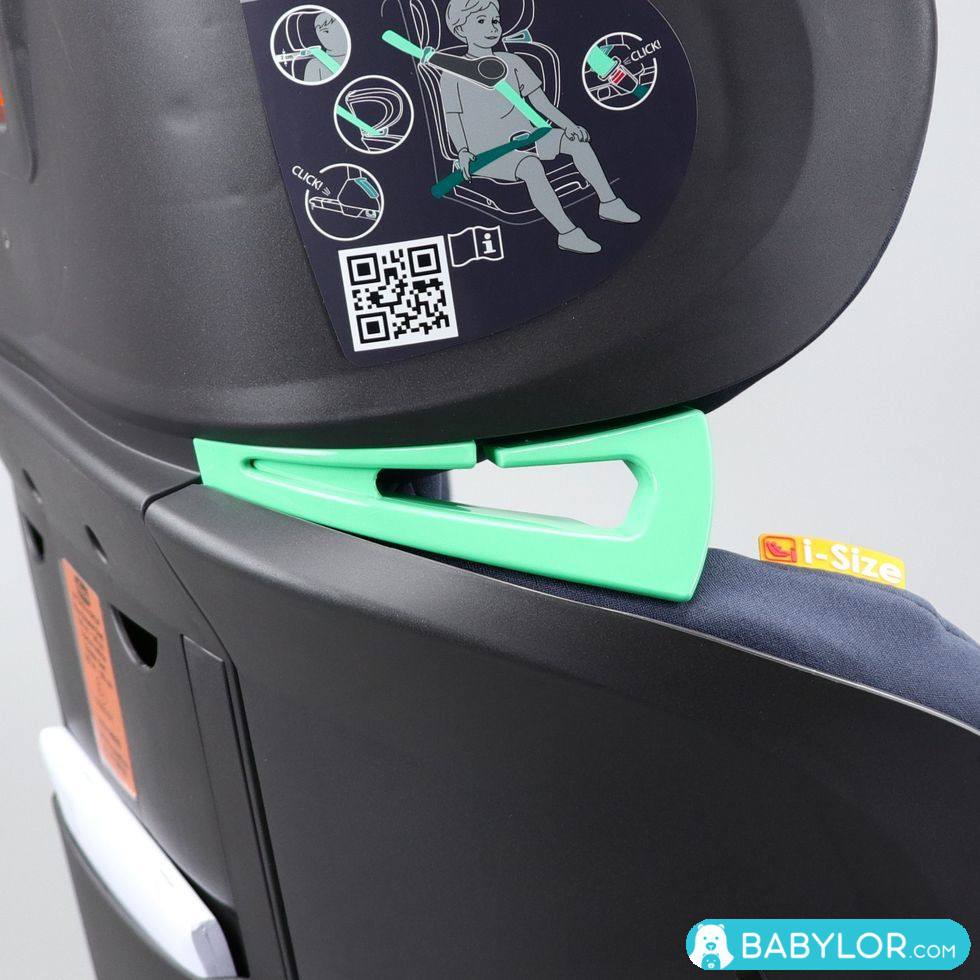
Diagonal belt guide
3 - Diagonal belt protection
Some booster seats have diagonal belt protectors to prevent chafing injuries to your child's neck.
The protector is placed on the right or left, depending on which side the seatbelt is on.
It wraps and fastens around the seatbelt after passing it through the ‘belt guide’.
As well as being comfortable, the belt protector absorbs impact forces in the event of a collision.

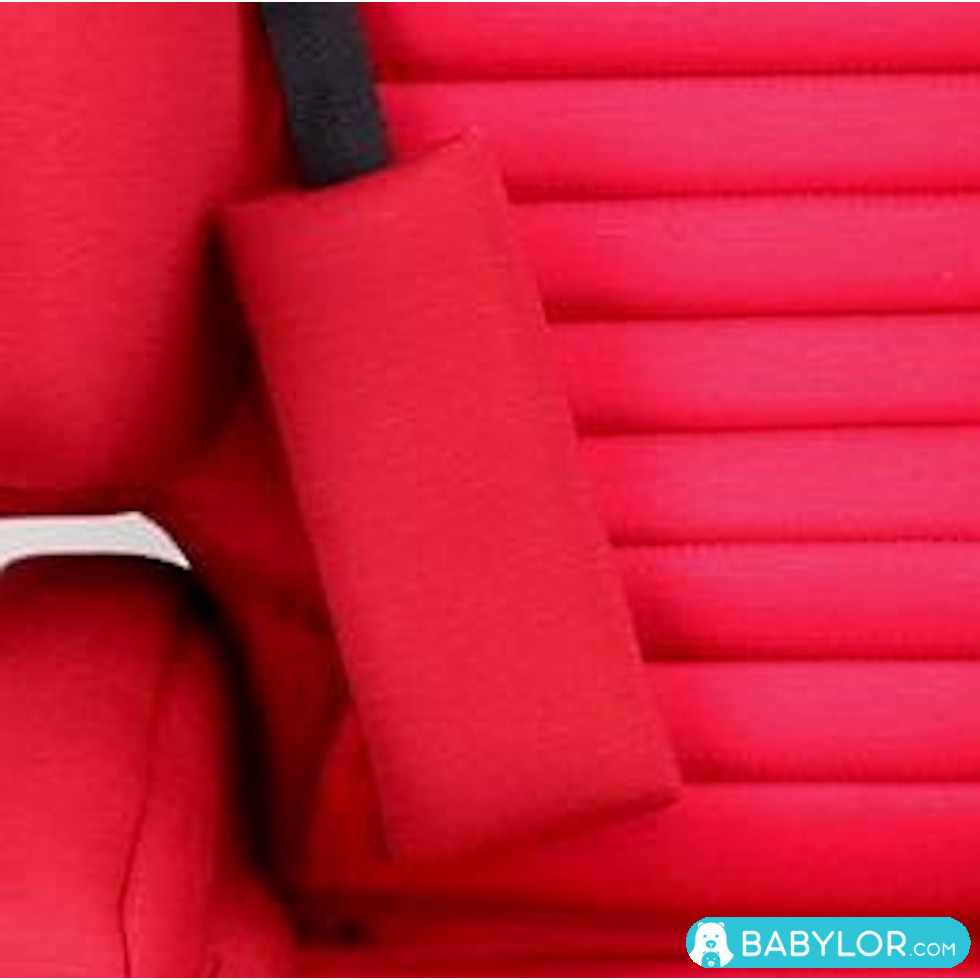
4 - Waist belt restraint system
Some booster seats are equipped with a lap belt restraint system.
This is an extra layer of protection that keeps the belt properly positioned on the hips and prevents it from sliding across the abdomen.
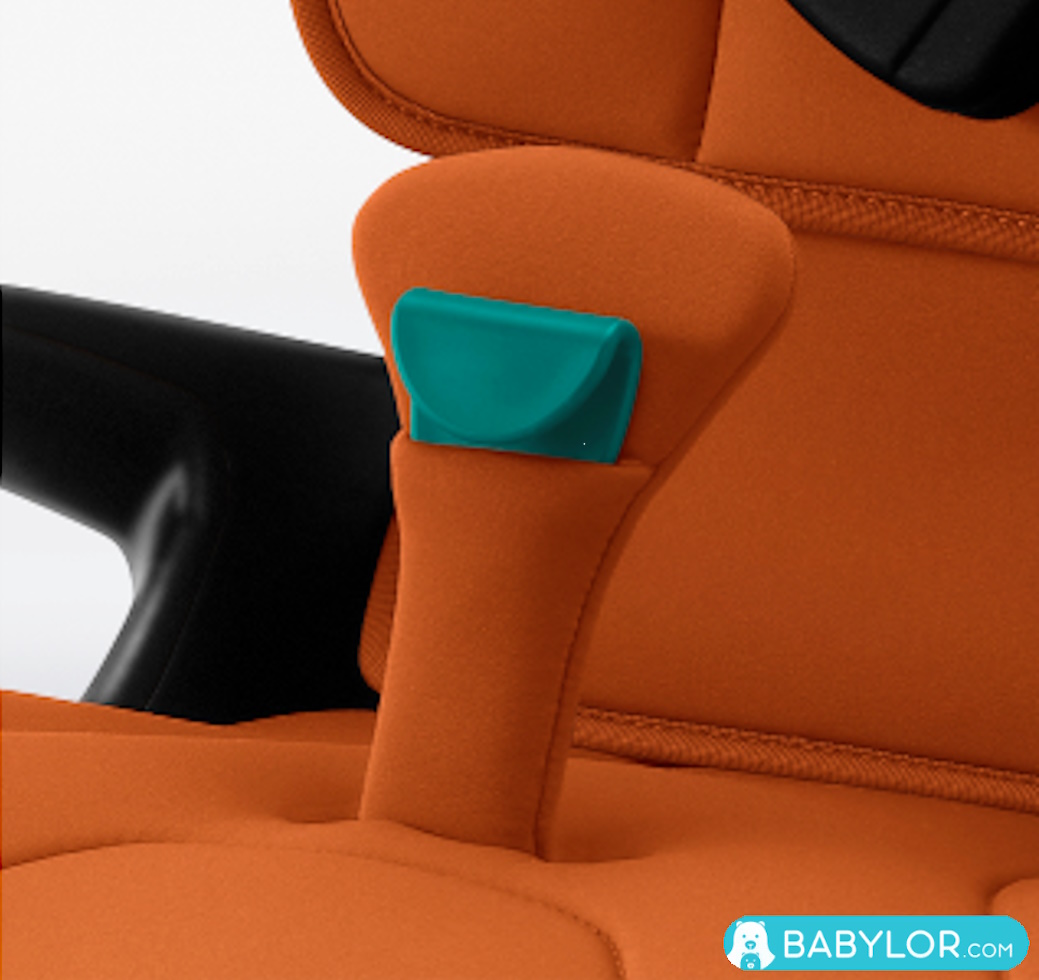
.jpg)
5 - Side protection system
Some booster seats offer additional side protection in the event of a side impact.
This protection system absorbs the forces of a side impact by reducing the distance between the car and your child.
This removable device is fitted on the side of the booster seat closest to the door.
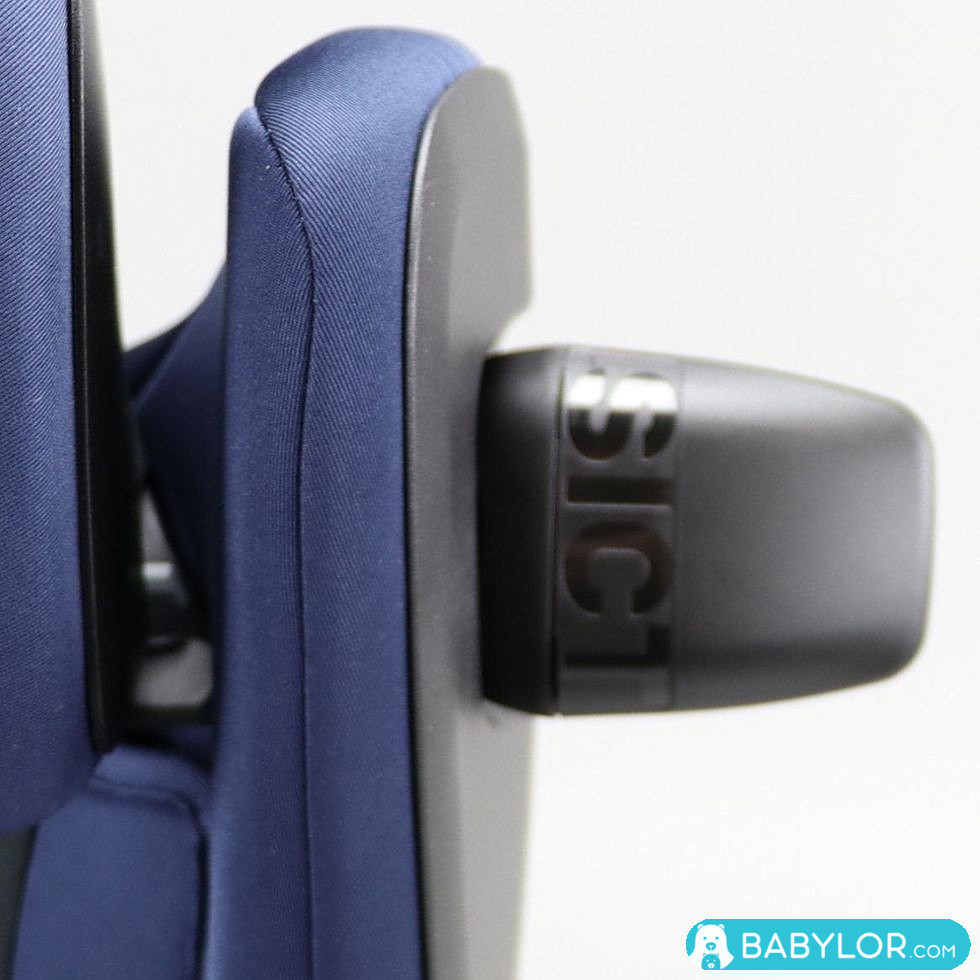
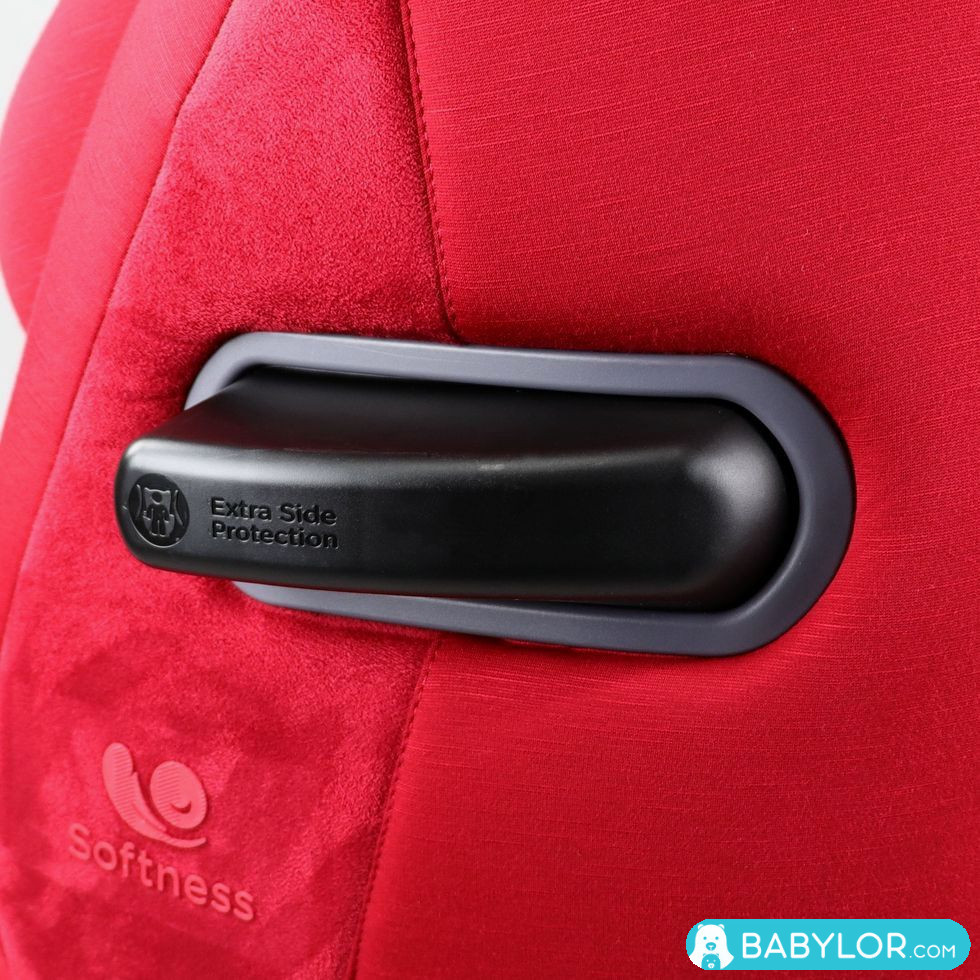
Regulations on booster seats
From a physiological point of view, it is recommended that your child should not be placed in a booster seat until he or she is 1 metre tall, and should remain in the booster seat until he or she is 1.35 metres tall (duration of use: approximately 3 years to 10 years).
Under the new R129 standard, only booster seats with a backrest are approved.
Your child must be seated at the rear of the vehicle unless your vehicle has no rear seat or all the rear seats are occupied by other, younger children.
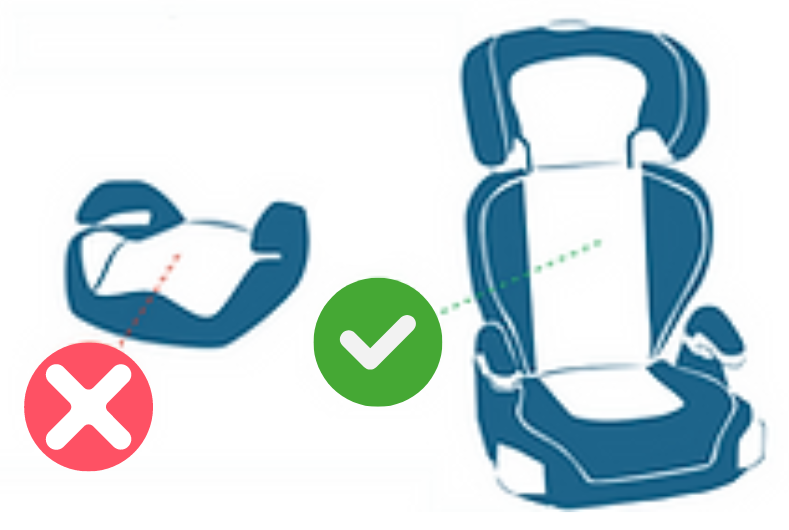

Protections
latérales
Discover our selection of booster seats




